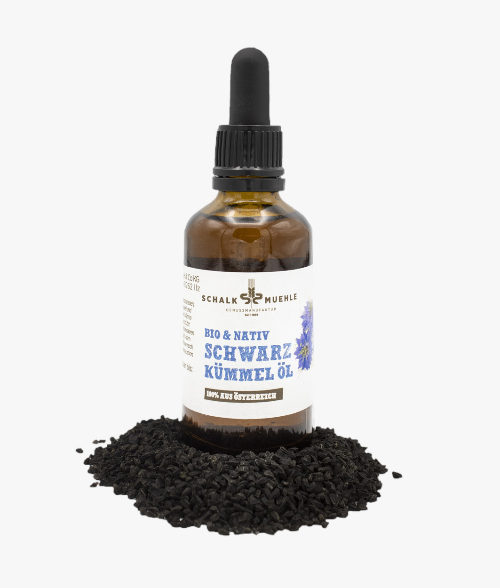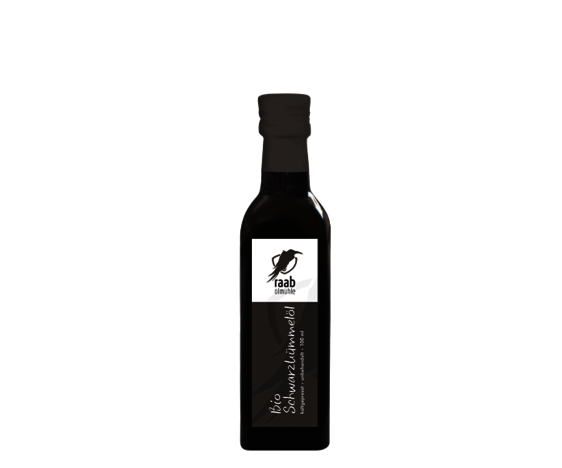Black garlic is the product of several weeks of fermentation at a temperature of 58 degrees. The blossom-white garlic becomes deep black garlic that tastes almost like candy. Caramel and balsamic notes mix and it is only in the finish that one recognizes its starting product, the garlic. Due to the long fermentation time, the allicin is converted. The biting, sharp taste of garlic disappears in favor of its sweet, sour properties.
Simply remove the small black "truffles" from the whole bulb and off you go. By the way, the peel also contains a lot of aroma. We are happy to cook you in vegetable stock.
Black garlic enriches sauces such as tomato sauces, pepper salsas and meat sauces. Many of our customers just snack on it... and in oursBlack garlic risottohe is an absolute highlight.
We are happy to cook the peeled off peel in our fund - so don't throw it away!
Ingredients: Organic garlic and time
Origin garlic:Nursery Bioschanze, Vienna, Austria
capacity: 40g
Black Garlic | whole bulb | black garlic
Excerpt from:Black Garlic, Prof. dr Sigrun Chrubasik Hausmann
Garlic has been used not only as a food but also as a medicine in all cultures for thousands of years. The special thing about garlic are the sulfur compounds. Volatile sulfur compounds are responsible for the unpleasant evaporation through the breathing air and the skin. By ripening or fermentation and ripening, odorless garlic preparations can be obtained. Extracts from ripened or fermented "black" garlic contain water-soluble ingredients, some of which are more effective than those of raw garlic. The WHO recommends a daily dose of up to 5 g fresh garlic or up to 1.2 g garlic powder or other preparations with up to 12 mg alliin or up to 5 mg allicin per day. Extracts from ripened or black garlic contained up to 2.4 mg S-allylcysteine in the daily dose. In experimental and human pharmacological studies, effects could be demonstrated for the fat-soluble and water-soluble sulfur ingredients, the use of garlic to lower high blood pressure and high cholesterol and blood sugar, to improve the flow properties of the blood and to reduce oxidative stress and thereby triggered cell damage (liver, kidneys, intestines, heart, brain) make sense. The formation of arteriosclerotic plaques was inhibited. Toxic liver, kidney and heart damage and the Alzheimer's and Parkinson's changes in the brain were less pronounced with garlic intake. Because of its antiproliferative and immune-stimulating effect, garlic is also indicated for cancer, because of its anti-inflammatory effect in inflammatory organ and joint diseases, and because of its spasmolytic and carminative effect in irritable bowel syndrome. The strong antibacterial and antiviral effect can be used for colds. There are many clinical studies whose data have been pooled in pooled studies. They prove that garlic is a natural blood pressure and cholesterol reducer. Normal blood pressure is not affected by garlic. It is unclear why some hypertensive patients and some patients with high blood lipids do not respond to garlic. Many studies point to a reduction in cardiovascular risk factors and a reduction in the risk of cardiovascular complications (stroke, heart attack) and a reduction in arteriosclerotic vascular changes. The effectiveness is also promising for colds and has not yet been finally clarified for cancer, rheumatism, diabetes and Alzheimer's dementia. Garlic and preparations from it can be associated with adverse events such as exhalation, heartburn, nausea, vomiting and diarrhea. There is no risk of adverse events when taking odorless garlic supplements. Attention must be paid to the interactions of garlic with medicines (hardly with the odorless garlic preparations). As a precaution, however, the garlic extracts with water-soluble ingredients should not be taken together with synthetic anticoagulants and should be discontinued before surgery. Although garlic is not toxic at recommended doses, pregnant women should consume garlic in moderation until a full safety profile has been established.






















